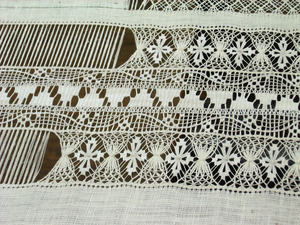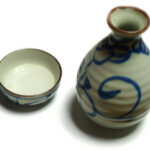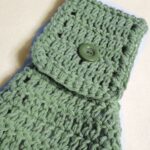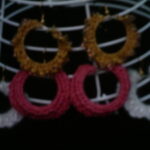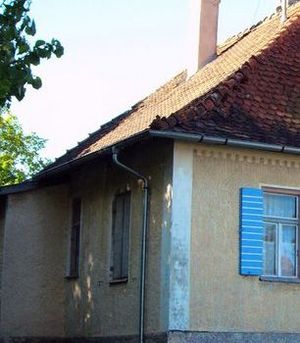A Ten Star Rating with a Negative
Rating (on a scale of 1-10 with 10 being the highest)
- overall rating 10.5
- project design–10.5
- pictures–10.5
- clarity of instruction–10
- format of instruction within book–7
- variety of projects–10
- ease of design–10
First the bad: The author does not list the threads used, not brand nor size. The Filet Crochet Book only lists gram weight of crochet thread. I found this absurd as the last time I checked, different brands of crochet thread have different yardages per gram weight, per thread size. Let’s point out, for the sake of the novice…10 grams of a bulky thread, will not yield nearly as much yardage, as a thin thread. Chris Rankin by omitting this important information handicaps the crocheter. W hat this means is, potentially a crocheter would not have enough thread to finish a project from this book once started. The remedy? The author suggests buying extra (not the regular cautionary extra thead every good designer recommends when starting a project, but tons of extra thread [simply because the author does not state in adequate measure the yardage quotient/brand/skeins needed]). The author states “The amount of thread required is listed by grams, but obviously different brands have different yardages so buy more than you’ll think you’ll need. You can probably return it :(, or put it in the proverbial oddball collection…,”
More about the thread…
and furthermore he states “We have not indicated a specific thread size since that depends on the final gauge you obtain. It will be necessay for you to experiment with the threads available to you.” (!!!) Let me say, that is why the readership purchased this book, so that when making the projects-with the correct crochet needle size, appropriate thread size or brand, and correct target gauge to be obtained-the same results can be acheived. If not, by using the same materials and directions, the crocheter, at a minimum will know how far off the mark she/he is. Also, the author suggests buying every thread size available and working up samples in lieu of divulging the threadsize. This did not sit well with me either, our lives as mothers are hectic. A desire to enliven our homes with hand made items should not come be-labored with unnecessary work that could be cut to a minimum by giving thorough specifics of the materials used by the designer.
Thread size demystified
As for the thread size to use, I was able to figure out the thread size on every project by comparing the steel crochet needle size with the industry standard for the corresponding thread. For example, the Crocus curtain pattern on page 72 list’s steel needle size 8, which most maufacturers recommend for use with size 10 crochet thread. Another example, edging B on page 38 list’s a size 10 steel crochet needle, the chart here suggests using a size 20-30 crochet thread. Thus in this manner, by using the chart at the link, I was able to add more accuracy to the instructions, so my finished product will be that as shown in the book.
What’s wrong with the instructions…
Lastly, the instructions are somewhat awkwardly interspersed in each section after the photos. The project image may be shown on one page with a note on which page the instructions can be found. Once at that page that instuctions may then be broken into two sections on non-consecutive pages. All the instructions are very brief, so I was puzzled why the publisher found difficulty in keeping the instructions as one unit. It is, an inconvenience, yes, but not one that I predict would take away from the decision to buy.
Now the good:
I was shocked to see so many projects of high quality in this book! The Filet Crochet Book was published in 1990. Some of the needlecraft books I have read published in the 1990 era and prior, are lacking in project design, picture quality and presentation of the projects. That is not the case with The Filet Crochet Book. All the designs have a modern 2011 flair. Every project is lovely, fresh and do-able. And, the presentation and staging of the projects are excellent.
The really, really good
The Filet Crochet Book starts with a history of filet crochet. Then follows up with every possible instruction (I could think of) on any technique that may be employed in making a filet crochet project.
It includes instructions on;
- how to read a filet crochet chart
- how to do lacis
- a comparative U.S. versus U.K. crochet needle chart
- instructions on blocking your finished project
- sewing insets and edgings
- how to work mitered corners, and
- a primer on increasing and decreasing for shaped edges.
Also,
- the pictures are beautiful, full color, large images
- the designs are excellent, from fresh fun designs (clown doily) to heirloom quality coverlets
- the instructions, per se, are clear and concise
- all easy-to-follow design charts
- each chapter includes a variety of designs, there are 100 designs in all
The chapters
The Filet Crochet Book is broken down in to five chapters. In each can be found a variety of wonderful designs. The Filet Crochet Book is a real pleasure for simple elegant designs for your home.
I. Panels and Doilies There are six doilies sewn around shaped wire (I suggest half hard jewelry wire. It is readily shaped while maintaining the final configuration), and a set of three panels for doorfront sidelights.
II. Borders and Edgings There are fourteen edgings for shelves, ten edgings for handkerchiefs and pocket linens, thirteen edgings for nightgowns and clothing, three edgings for curtains and a table coverlet.
III. Curtains and Valances There are five valances, seven curtains, plus one wide curtain edging; All are lovely!
IV. Bedrooms and Nursery There are three insets for pillowcases, two bed coverings (both are heirloom quality but the one featured on page 93 is the creme de la creme!), a bedroom trio that includes curtain edging with pillow and an inset for bed linen, three coverlets for the nursery (one with an edging, the other two are fully crocheted), a canopy for a bassinet, and an utterly adorable pillowcase set in two different versions.
V. Tablecloths and Runners There are eleven tablecloths, four with only borders. Two of the tablecloths match curtains shown in the Curtains and Valances section. There’s also a runner, a teapot cosy and two market bags.
There are very few books about filet crochet on the market today. Of the ones I have seen, this is by far the best. I have voluteered in a public library on a Monday through Friday 3/4 time schedule and have perused, literally tens of thousands of books. Many of the craft books I have read from cover to cover. Thus, I like to think I qualify, to make a mildly authoritative opinion on any craft reviews I write. I had my ax to grind with The Filet Crochet Book. You heard me. I did it.
In conclusion, minus the thread size discrepancy, The Filet Crochet Book is a wonderful resource for those interested in filet crochet. The projects are easy, yielding from the everyday to the heirloom. Every project in this book is adorable. Plus, the projects can easily be the inspiration for items made for sale on any of the one-of-a-kind handmade sites. And, although I originally borrowed this book from my local library, know.., I am purchasing a copy for my personal library. Simply put, the positives of the Filet Crochet Book far outweigh the negatives, and The Filet Crochet Book is a keeper.
